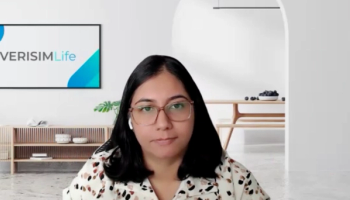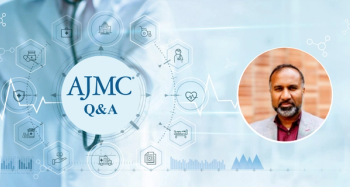
The American Journal of Managed Care
- January 2021
- Volume 27
- Issue 1
TeleConnect: Digitally Connecting Physicians Across the Health Care System
TeleConnect introduces the concept of connecting primary care physicians and specialists by leveraging technology. Improving communication in a health care system betters patient care.
ABSTRACT
Objectives: Prior to the coronavirus disease 2019 (COVID-19) pandemic, introductions between primary care physicians (PCPs) and specialists were conducted in person. These important meetings were integral to patient care, facilitated care coordination, and improved the managed care of the patient. During COVID-19 and beyond, these important relationships should be fostered via digital means. We aimed to identify opportunities of digital health integration for the optimization of physician integration.
Study Design: Cross-sectional study.
Methods: Prior to COVID-19, we conducted a survey of PCPs at a large multidisciplinary group with more than 1500 physicians that staffs multiple hospitals within a health system. The survey was sent via email with only 1 reminder.
Results: Thirty-six PCPs responded to the survey; 25% (9/36) were very satisfied and 19.4% (7/36) were moderately satisfied with the current in-person introductions. The PCPs found introductions to specialists helpful; 83.7% (31/37) wanted to “put a name to the face,” and 64.9% (24/37) wanted to “understand the range of service provided by the specialist.” Fifty-one percent (19/37) and 54% (20/37) said “I can better manage patient care and know when to refer to a specialist” and “I learn more about a particular specialist,” respectively, with specialist introductions. If made easy, 67.6% (25/37) of PCPs would be interested in TeleConnect to facilitate introductions to specialists.
Conclusions: Referrals between PCPs and specialists have been an integral aspect of medical care within managed care organizations. With the advent of technology during COVID-19, and along with this brief survey, the need for digital means to introduce PCPs and specialists is underscored.
Am J Manag Care. 2021;27(1):e4-e6.
Takeaway Points
Patient care in a managed health network relies on excellent communication between primary care physicians (PCPs) and specialists. This manuscript underscores the importance of leveraging technology to best facilitate patient referrals.
- Interdisciplinary connections between physicians are important for effective managed care of patients.
- Optimization of referrals is important for patient care, reduction of physician burnout, and integration within a health system.
- Survey findings presented in this manuscript reveal that meetings between PCPs and specialists are desirable to physicians.
- Similar to the use of technology during the coronavirus disease 2019 pandemic, we should leverage digital tools to connect physicians across a network.
Prior to the coronavirus disease 2019 (COVID-19) pandemic, health care physician network development, integration, and interprofessional collegiality were facilitated by introductions between primary care physicians (PCPs) and specialists. Such meetings would include face-to-face introductions during orientation or at grand rounds, morning conferences, arranged dinners, or staff meetings. Published guidelines have been developed to establish such practices and describe the vast advantages of interdisciplinary relationships.1 These relationships were fostered over time, and these meetings were integral to patient care, physician wellness, care coordination, and the well-being of the health care network.
Establishing effective communication between a PCP and a specialist is patient centered and important for care.2 Referrals occur for a variety of reasons; in a study of 18,754 referrals, 35.4% were for a specific treatment or procedure and a similar proportion were for a specific diagnostic test.3 Only 14.3% were for further advice on management, which underscores the importance of expeditious referrals for our patients.
In addition to improving patient care, optimized PCP and specialist communication likely has significant implications for our physicians. Results of recent studies reveal that a source of burnout for PCPs is related to after-hours meetings and specialist access to care.4,5 In a study of 1252 physicians, 55% to 65% of PCPs felt more comfortable referring a patient to a specialist if they had previous experience with that physician.6 Similar trends in specialist-to-specialist referrals likely exist. These connections are therefore important and must be fostered.
From a network perspective, optimized communication between physicians is vital for the sustainability of the health system. As the era of managed care requires careful coordination of care, streamlined referrals have the potential to create better system outcomes.7 A multispecialty approach toward a patient’s care can best be facilitated with optimized interprofessional relationships.8
From an operational standpoint, the COVID-19 pandemic has underscored the importance of optimizing communication via digital means to reduce in-person meetings. Technology to better communicate exists more than ever in hospitals. With the advent of such ubiquitous technology, we believe that the landscape of introductions has shifted to digital means; hence, we are introducing “TeleConnect,” which encourages digital synchronous connections between PCPs and specialists.
To best measure the readiness of PCPs to engage in TeleConnect, the primary objective of this survey was to conduct a brief needs assessment with PCPs to gauge satisfaction with the current in-person introduction method. Secondary outcomes included understanding physician preferences, readiness for TeleConnect, and desired specific specialty introductions.
METHODS
A brief 7-question survey was sent to PCPs to gauge the level of interest in TeleConnect. All surveyed were members of Harvard Medical Faculty Physicians at Beth Israel Deaconess Medical Center, a multidisciplinary specialist organization with more than 1500 physicians. The survey was disseminated via email by a PCP leader at Beth Israel Deaconess HealthCare prior to the COVID-19 pandemic. Only 1 reminder was sent to physicians in an effort to reduce any survey fatigue. All survey responses were recorded anonymously. The survey is available upon request.
TeleConnect was conducted by leveraging commonplace and free telecommunication modalities, such as Zoom. The meetings were often facilitated between PCPs and specialists by our director of physician engagement, but it was available ad hoc by the physicians.
RESULTS
Thirty-six PCPs responded to the survey in the winter of 2019; as described in
If made easy, 67.6% (25/37) of PCPs would be interested in TeleConnect to facilitate introductions to specialists. Thirty-two percent (12/37) were not interested. In addition to facilitating an introduction, 62.2% (23/37) would want the specialist to provide a short educational topic during the meeting (eg, a dermatologist may introduce herself and provide a 15-minute overview of how to recognize melanoma). PCPs used a free-text field to enter 24 specialties of interest to meet. Additionally, PCPs commonly requested that TeleConnect aim to introduce affiliate specialists from our recently merged and smaller community hospitals.
DISCUSSION
COVID-19 has changed the landscape of how medicine is practiced as patients and physicians aim to seek other care modalities beyond traditional in-person care, such as telemedicine. Simultaneously, during the pandemic it is important to maintain the relationship between PCPs and specialists. We believe that technology similar to that used in telemedicine can be utilized for sustainable, convenient relationships among physicians in a health care system. The results of the survey conducted underscore that physicians find these relationships useful. Advantages such as putting a name to a face and learning more about the specialist can foster a tighter referral network, therefore benefiting patients, physicians, and the health system. Although some PCPs felt they would benefit from an educational topic from specialists, it was not the primary goal of the PCP. Another secondary outcome was that the PCPs requested introductions to other specialists, including those from affiliate sites that may be closer to the patient’s community, thus benefiting patients. This also offers an opportunity for the surveyors to identify gaps in network referrals within our network.
Physician burnout is ever present, and as a health care system, we must streamline workflows that reduce burnout. Most physicians were open to a TeleConnect model, in which a PCP and specialist are connected via digital means. These virtual meetings negate the need for travel, reduce time away from family, and allow for productivity in other capacities (such as patient care). With bountiful digital telecommunication tools available during the COVID-19 pandemic, a new era of primary care and specialist introduction has developed. We can leverage our commonplace and cost-free existing technologies to improve collaboration within the system during COVID-19 and beyond. A sustainable model can be established and sustained without cost or much legwork. As we transition health care communication from in person to virtual, we have the potential to use TeleConnect as a model for telemedicine. Integration into the electronic health record and involvement of patients in multidisciplinary clinics (involving the PCP and specialist) may be exciting opportunities for the health care system in the future.
We believe that TeleConnect can therefore have significant implications on the health of patients, physicians, and health systems, and we suspect that there are many benefits of developing a program to digitally coalesce our network of physicians.
Limitations
The TeleConnect survey was conducted just prior to the COVID-19 pandemic, and therefore it predates the significant uptick of technology utilization in communication across the world. Health technology utilization is much higher now during the pandemic, which we suspect likely deflates our survey results compared with the current state of remote connections.
CONCLUSIONS
Referrals between PCPs and specialists should be optimized within a health system to better patient care. This brief TeleConnect survey, along with technological advancements during COVID-19, underscores the importance of connecting physicians through digital means.
Author Affiliations: Harvard Medical Faculty Physicians at Beth Israel Deaconess Medical Center (OJM, NN, ABK, CA), Boston, MA; Mount Sinai Medical Center (OJM), Miami Beach, FL; Beth Israel Deaconess HealthCare (NN), Boston, MA; Beth Israel Deaconess Medical Center (ABK, CA), Boston, MA.
Source of Funding: None.
Author Disclosures: The authors report no relationship or financial interest with any entity that would pose a conflict of interest with the subject matter of this article.
Authorship Information: Concept and design (OJM, NN, ABK, CA); acquisition of data (OJM, NN); analysis and interpretation of data (OJM, CA); drafting of the manuscript (OJM, CA); critical revision of the manuscript for important intellectual content (OJM, NN, ABK, CA); administrative, technical, or logistic support (CA); and supervision (OJM, ABK, CA).
Address Correspondence to: Oren J. Mechanic, MD, MPH, Harvard Medical Faculty Physicians at Beth Israel Deaconess Medical Center, 375 Longwood Ave, 3rd Floor, Boston, MA 02215. Email: omechani@bidmc.harvard.edu.
REFERENCES
1. Piterman L, Koritsas S. Part II. General practitioner–specialist referral process. Intern Med J.
2005;35(8):491-496. doi:10.1111/j.1445-5994.2005.00860.x
2. Gandhi TK, Keating NL, Ditmore M, et al. Improving referral communication using a referral tool within an electronic medical record. In: Henriksen K, Battles JB, Keyes MA, Grady ML, eds. Advances in Patient Safety: New Directions and Alternative Approaches (Vol. 3: Performance and Tools). Agency for Healthcare Research and Quality; 2008.
3. Coulter A, Noone A, Goldacre M. General practitioners’ referrals to specialist outpatient clinics. I. Why general practitioners refer patients to specialist outpatient clinics. BMJ. 1989;299(6694):304-306. doi:10.1136/bmj.299.6694.304
4. Linzer M, Levine R, Meltzer D, Poplau S, Warde C, West CP. 10 bold steps to prevent burnout in general internal medicine. J Gen Intern Med. 2014;29(1):18-20. doi:10.1007/s11606-013-2597-8
5. Rotenstein LS, Torre M, Ramos MA, et al. Prevalence of burnout among physicians: a systematic review. JAMA. 2018;320(11):1131-1150. doi:10.1001/jama.2018.12777
6. Kinchen KS, Cooper LA, Levine D, Wang NY, Powe NR. Referral of patients to specialists: factors affecting choice of specialist by primary care physicians. Ann Fam Med. 2004;2(3):245-252. doi:10.1370/afm.68
7. Gandhi TK, Sittig DF, Franklin M, Sussman AJ, Fairchild DG, Bates DW. Communication breakdown in the outpatient referral process. J Gen Intern Med. 2000;15(9):626-631. doi:10.1046/j.1525-1497.2000.91119.x
8. Stille CJ, Jerant A, Bell D, Meltzer D, Elmore JG. Coordinating care across diseases, settings, and clinicians: a key role for the generalist in practice. Ann Intern Med. 2005;142(8):700-708. doi:10.7326/0003-4819-142-8-200504190-00038
Articles in this issue
almost 5 years ago
Using Natural Language Processing to Classify Social Work Interventionsalmost 5 years ago
Barriers to Accessing Online Medical Records in the United Statesalmost 5 years ago
Growth of Electronic Consultations in the Veterans Health Administrationabout 5 years ago
Cost Savings Associated With Electronic Specialty Consultationsabout 5 years ago
From the Editorial Board: Sachin H. Jain, MD, MBANewsletter
Stay ahead of policy, cost, and value—subscribe to AJMC for expert insights at the intersection of clinical care and health economics.






























































